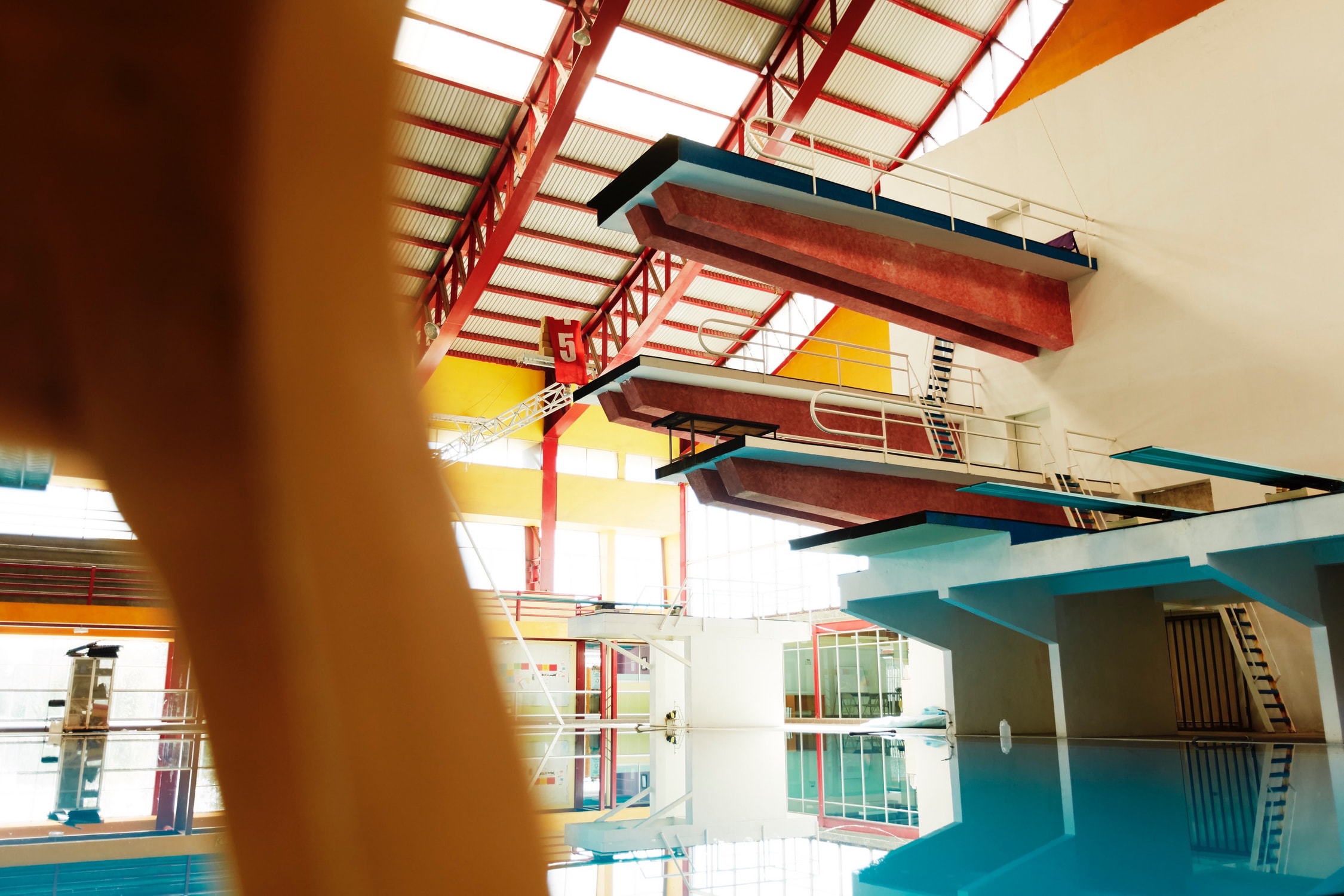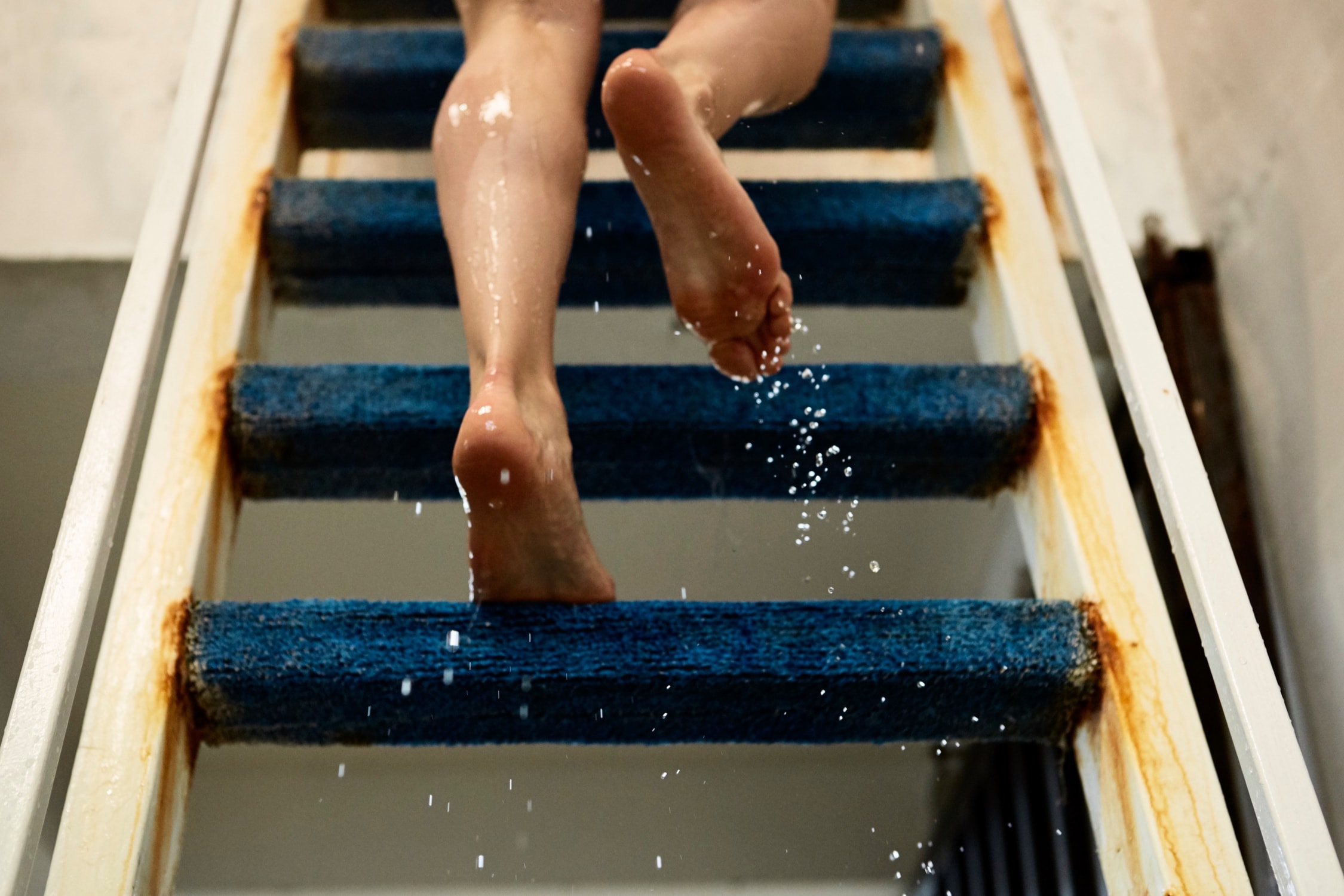Not long after that sixth-place finish, Orozco moved to Mexico City, where she could train daily with Espinosa at the Centro Acuatico Ceforma. Located in Southern Mexico City, an approximate 30-minute drive from the city center, past the home stadium of the Pumas football club, sinuous freeways, corporate headquarters and countless parks, framed by distant blue mountains, Ceforma was built for the 1968 Games and still boasts earmarks of the era. Golden yellow walls, fire-red rafters and cobalt blue diving platforms form graphic lines, framing three Olympic-size pools. A massive banner of Espinosa captured in a moment just before takeoff adorns the far wall.

For the past eight and a half months, Espinosa and Orozco have convened in the space. Five to six days a week, they balance dry-room work with diving, always under the watchful eye of Ma Jin, Team Mexico’s diving coach. Jin, originally from China, has worked with the team since 2005 and is considered a hero in the country for her contribution, which has elevated the team’s technique, precision and strength — and its overall performance on the world stage. The pair also trains five days a week with Cruz. Monday, Wednesday and Friday they do lifts. Tuesday and Thursday, the duo moves to resistance training and cardio work, which helps tears in the muscles to heal more quickly. And to maintain their energy, they rely on an unrestricted, yet protein- and amino acid-rich diet. Meals range from seafood and nutritional shakes to tortas de tamal, a notoriously decadent local dish that features tamales served in sandwich rolls.
This ultimately balanced, yet wieldy diet mirrors Espinosa and Orozco’s overall approach. They take their work extremely seriously, but solemn moments are offset by periods of mirth, with the elder diver often prompting her partner to dissolve into giggles, evidencing the pair’s yin-and-yang personalities as well as their age difference.

“We’re very different,” Espinosa confirms. “I am decisive and aggressive. Ale’s more introverted. I am always making jokes. I have a strong character. Maybe that has caused me trouble once in a while, but this is the way I am. I don’t get stuck on anything. I let everything go and just move forward.”
The key to reconciling divergences of all types, both divers assert, lies in dialogue. “Good communication is essential,” declares Orozco, “and having a good relationship and real communication outside of that one second of diving is more important than that second. Paola is like my sister.”
The equation, with all its variables, appears to be paying off. Instead of upsetting their synchronicity, the pair’s new physical differences have begun to counterweight Espinosa and Orozco’s respective strengths. “Now Ale’s a little bit taller than me, but I naturally jump a little bit higher,” explains Espinosa, “so I meet her in the air.” The pair’s steady progress is fueling them as they look to the summer when, as their country’s best chance for a podium-top win, they will concentrate four additional years of sacrifice and toil into that second-and-a-fraction plunge. But for Espinosa and Orozco, the rush always comes before the gold. “It’s dangerous,” Orozco states, “I love that fear and adrenaline.”
“You feel fear, anxiety, insecurity when you walk up the stairs onto the platform,” Espinosa adds. “But then there is a second before you jump, when you feel an intimacy with yourself. You know how to handle yourself; you can control yourself. That’s the moment that I like the most: I love the butterflies.”

